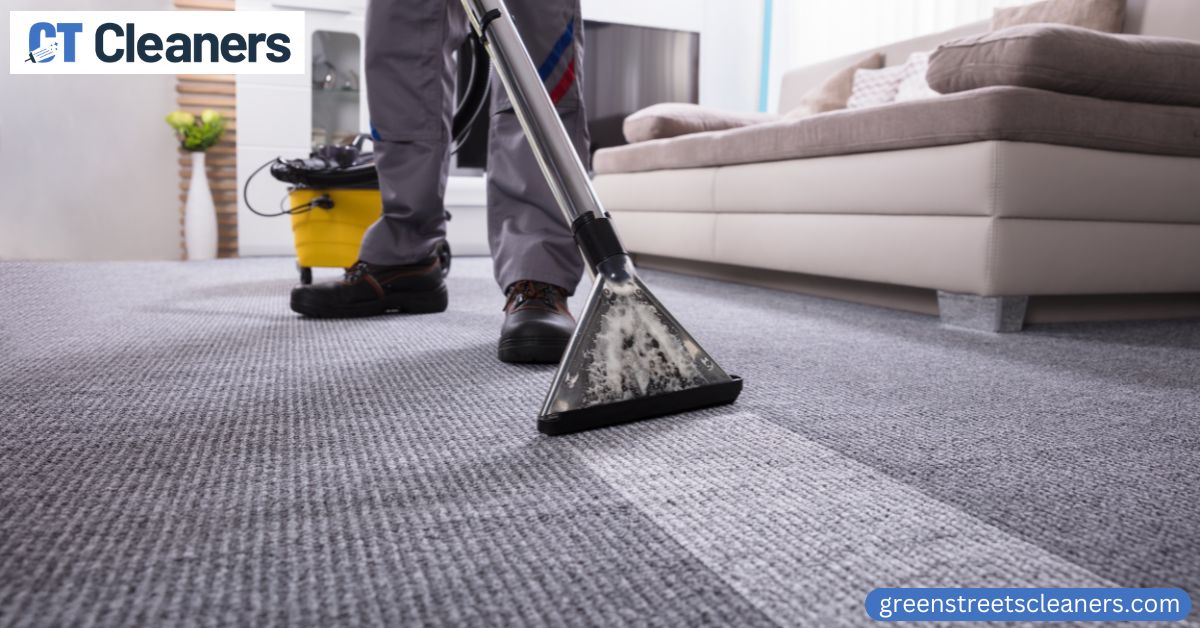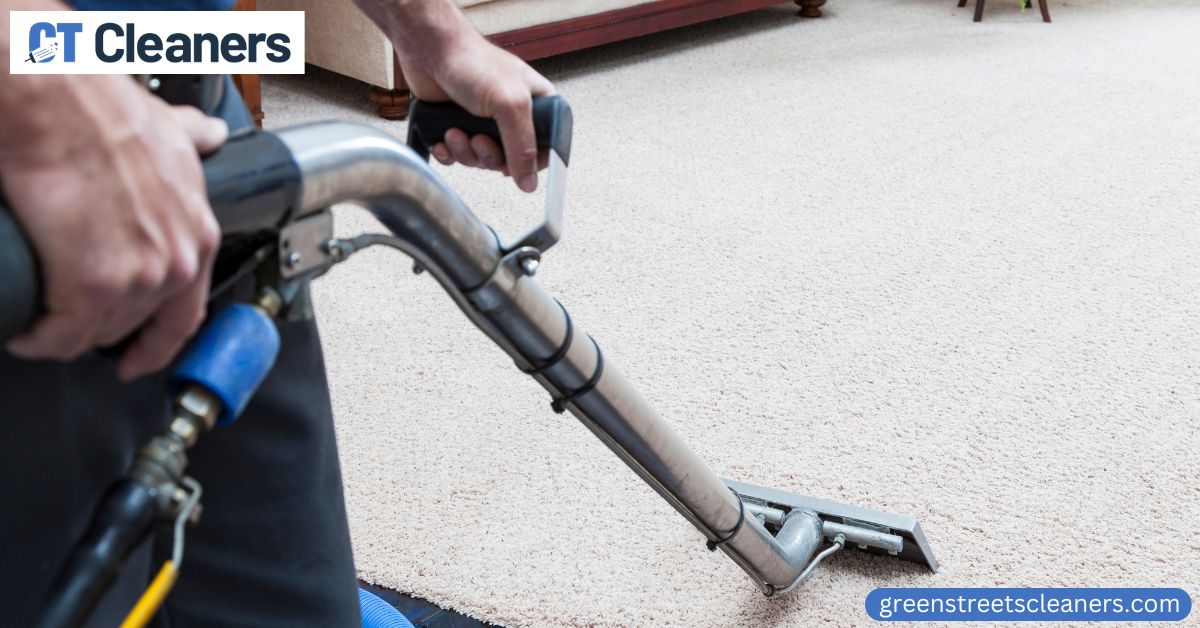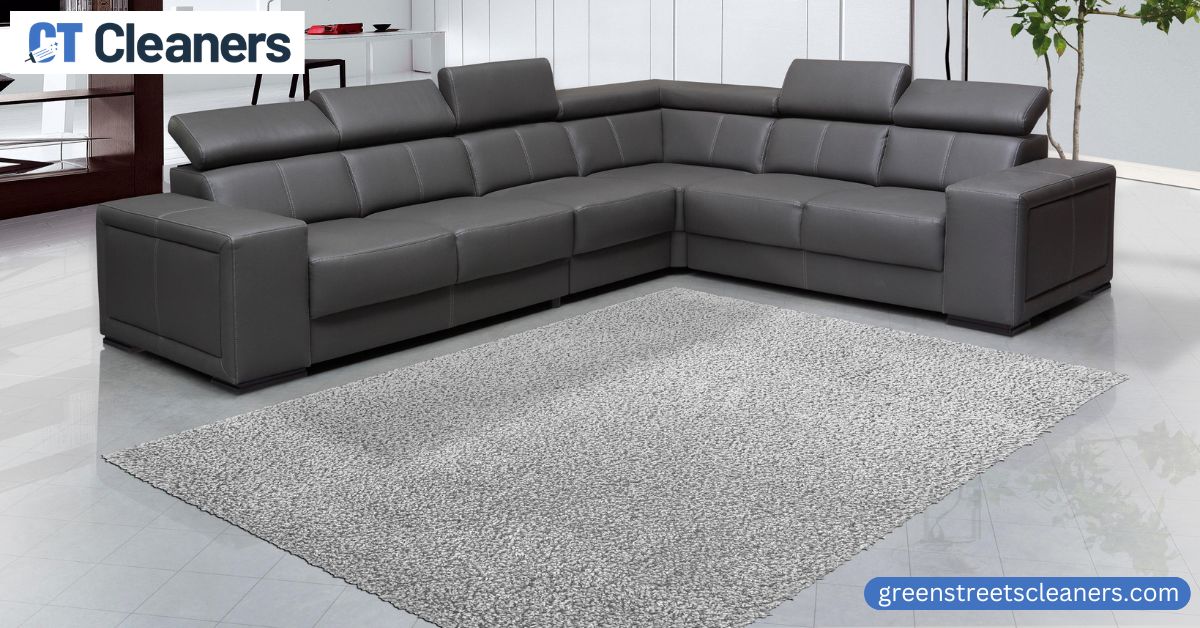Rug sanitizers are an invaluable tool for anyone who wants to keep their carpets and rugs looking like new. Whether you need to clean pet odors, remove dust mites or just want your carpets to look their best, a rug sanitizer is a perfect solution.
With the right product, you can get rid of allergens, bacteria, and dirt that can accumulate in your carpet fibers over time. In this post, we will discuss the benefits of using rug sanitizers as well as factors to consider when choosing one and the types available on the market today.
We’ll also provide instructions on how to use a rug sanitizer safely and tips for maintaining it properly so that it lasts longer. By following these steps, you can easily make sure your carpets stay spotless!

Benefits of using Rug Sanitizer
When it comes to pet odors, the rug cleaning process can be tiring and difficult. However, using a rug sanitizer eliminates pet odor from rugs quickly and efficiently. Furthermore, unlike harsh chemical-based cleaning agents, a rug sanitizer uses natural ingredients to clean pet messes and pet odors from your rugs.
This is especially beneficial for pet owners who want to keep their animals safe from harsh chemicals. Additionally, these pet odor eliminators can also be used for car interiors and furniture upholstery, making them a great overall solution for pet owners looking for an easy way to get rid of pet odors around the home.
Factors to Consider When Choosing a Rug Sanitizer
When choosing a rug sanitizer, it’s important to consider factors such as cleanser type, equipment usage, and molds on rugs. The chosen sanitizer should be of high quality in order to effectively eliminate molds, fungi, and other allergens that lurk deep in the fibers of a rug.
It’s also recommended to invest in durable equipment that can penetrate and clean your rugs from the inside out. If molds and other allergens are present in your rug, these issues need to be addressed accordingly for maximum results. With the right knowledge, tools, and products you can help ensure that molds have been completely removed before keeping your rugs back in your home.
Types of Rug Sanitizer
There are several different types of rug sanitizer available on the market today, each with its own unique benefits and features. From steam cleaners to chemical treatments, you have plenty of options when it comes to keeping your rugs free from contamination. In this article, we will discuss the various types of rug sanitizer so you can make an informed decision about which one is right for your home or office space.
|
Type of Rug Sanitizer
|
Description | Advantages | Disadvantages |
| UV-C Sanitizer | Uses ultraviolet light to kill bacteria and viruses | Chemical-free, effective against a wide range of pathogens |
Can only sanitize surfaces directly exposed to the light, and can be harmful to the skin and eyes
|
| Steam Cleaner | Uses hot steam to sanitize and disinfect surfaces | Chemical-free, and effective against a wide range of pathogens, can also remove dirt and stains |
Can be time-consuming to use, and may not work on all types of rugs or surfaces
|
| Chemical Sanitizer | Uses chemicals to kill bacteria and viruses | Fast-acting, and effective against a wide range of pathogens, can be used on a variety of surfaces |
Chemicals may be harmful to people and pets and can leave residues or discoloration
|
| Electrostatic Sprayer | Uses an electric charge to apply a fine mist of disinfectant | Can quickly and evenly cover large areas, effective against a wide range of pathogens |
Can be expensive, and requires specific training to use properly
|
| Ozone Generator | Produces ozone gas to kill bacteria and viruses | Chemical-free, can penetrate fabrics and reach hidden areas |
Can be harmful to people and pets, and requires specific training to use properly
|
How to Use a Rug Sanitizer
Cleaning and sanitizing rugs is an important part of keeping your home or office looking its best. But it can be a challenge to keep them clean without damaging the fabric or causing fading. A rug sanitizer is a great way to tackle dirt, grime, and bacteria without harsh chemicals. In this guide, we’ll show you how to use one effectively so your rugs look their best for years to come!
- Start by ensuring the area you would like to sanitize is clean and free of debris. Vacuum the rug to remove dirt, pet hair, and other debris before using a rug sanitizer.
- Test an inconspicuous area of the rug first with the sanitizer to determine how it reacts with the material. This will help prevent damaging any part of the rug because of harsh cleaning chemicals or treatments.
- Following manufacturer instructions, mix a small amount of the sanitizer with water in a spray bottle or bucket and stir together until completely dissolved.
- Spray or pour the solution carefully onto your rug from one end to another in a uniform manner, making sure not to saturate too heavily which could result in discoloration or stains on your rug’s surface.
- Allow for the sanitizing solution to sit on the rug for a few minutes before scrubbing lightly with a brush or cloth rag if needed in areas that still have stains or odors remaining after spraying initially.
- Thoroughly rinse your rug with clean, warm water until all traces of cleaner are gone, and allow it to air dry completely prior to use again once finished washing it off so that no residue remains behind on floors or furniture below it when it’s dry again.
“The rug sanitizer has been a lifesaver! I was very impressed with how clean and fresh my rugs looked after using their services!”
-Mike N., West End
Safety Precautions When Using a Rug Sanitizer
It is important to take safety precautions when using a rug sanitizer in organic rug cleaning. Firstly, make sure you read the instructions provided carefully and follow them step-by-step.
Secondly, use the correct amount of sanitizer for the particular type of organic material as indicated on the packaging as this will ensure it does not damage or stain the rug. Thirdly, always allow enough time for drying before vacuuming or walking on the rug to protect it from moisture, stains, and mildew.
Lastly, wear protective gloves when spraying or handling any chemical cleaners, including organic rug sanitizers. Taking these precautionary measures will ensure that organic rug cleaning can be safely achieved with minimal risk of ruining your precious carpets!
Maintenance of a Rug Sanitizer
Keeping carpets clean and free from germs is an important part of home maintenance. With a CT carpet cleaner, you can enjoy the deep clean and sanitization power of ultraviolet light to reduce potential allergens such as dust mites, pollen, and pet fur.
To ensure that the carpet cleaner stays in top shape and works effectively, proper maintenance is essential. This includes frequent replacement of filters, regular cleaning of its parts to keep debris and lint buildup to a minimum, and following the manufacturer’s guidelines for safe use.
Additionally, it is important to clean carpets with professional carpet cleaning equipment as recommended to maintain carpet hygiene – this will help extend your carpet sanitizer’s shelf-life!
In conclusion, rug sanitizers are an invaluable tool to keep carpets and rugs looking like new. With the right product, you can remove allergens, bacteria, and dirt from your carpet fibers over time. There are several different types of rug sanitizer available on the market today with their own unique benefits and features; it is important to consider factors such as cleanser type and equipment usage when choosing one for maximum results.
Additionally, proper maintenance including frequent filter replacement and cleaning of parts regularly is essential in order to extend its shelf-life. By following these steps carefully, you will be able to use a rug sanitizer safely while effectively keeping your carpets spotless!
Our latest work










